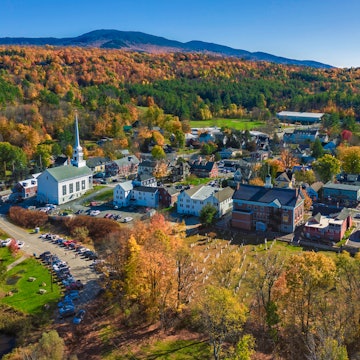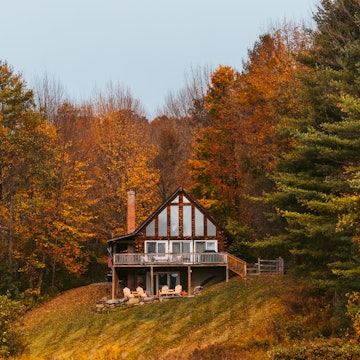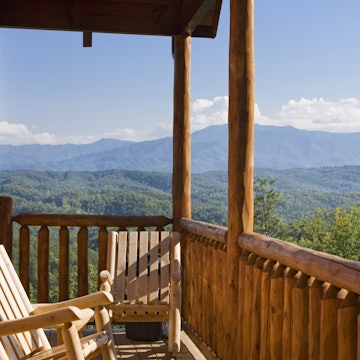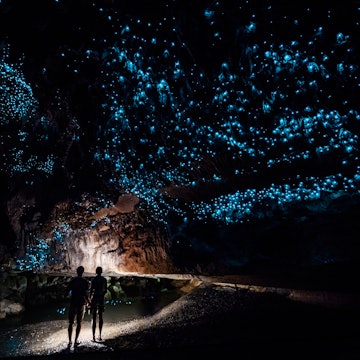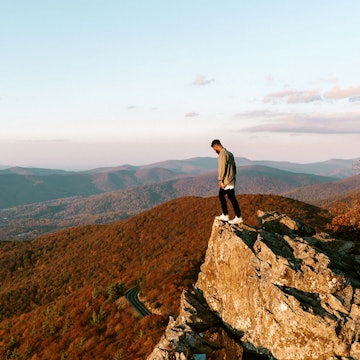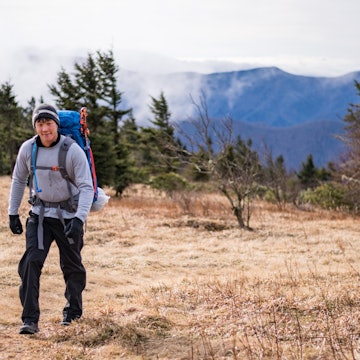

The appropriately named Garden Wall in Glacier National Park is a prime wildflower-viewing location. Qiaohuavip / Getty Images
It’s that wonderful time again. The snow is beginning to melt, the days are getting longer, and the flora of America’s national parks are waking up from their winter slumber. It’s wildflower season! Here are our top picks for hikers and photographers looking to get out and experience the rainbow-colored majesty of spring and summer blooms.
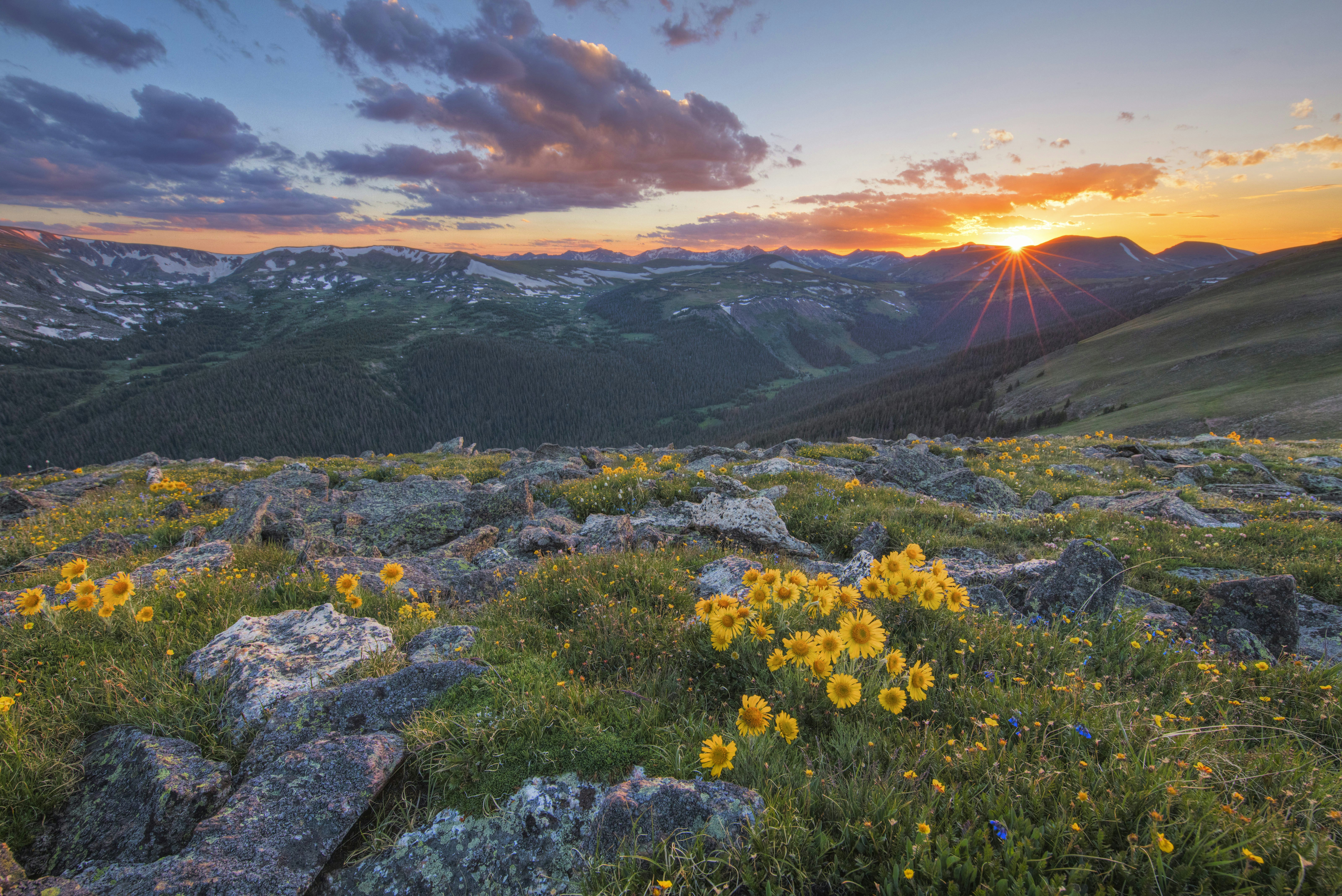
Rocky Mountain National Park
Peak bloom: June (8000-9000ft), July–August (above 9000ft)
Where to hike: Ute Trail or Cub Lake Loop
Where to drive: Bear Lake Road or Alpine Visitor Center
Due to its large range of elevations, Rocky Mountain National Park has a long and drawn out wildflower season, with waves of cheerful blooms popping up between late May through early September. Black-eyed Susans, crepe-colored geraniums, wood sorrel, bluebells, and hundreds of others call this park home.
For early-season flowers, check out the 6.1-mile Cub Lake Loop. With a peak altitude of 8620ft, this is an ideal hike for sniffing out elusive favorites like bee balm and wintergreen. Be sure to scope the lake for bright yellow pond lilies! Another favorite for flower lovers is the high alpine Ute Trail, which departs just behind the Alpine Visitor Center. This trek takes visitors to a height of over 11,600ft, meandering through fields of subtle but beautiful alpine forget-me-not, sky pilot, and old-man-of-the-mountain.

Mt Rainier National Park
Peak bloom: Mid-July–mid-August
Where to hike: Alta Vista Trail or the Skyline Trail to Myrtle Falls
Where to drive: Stevens Canyon Road to Reflection Lake
Discover why naturalist John Muir called Mt Rainier’s foothills “the most luxuriant and the most extravagantly beautiful of all the alpine gardens I ever beheld” by taking a wildflower-viewing trip to America’s fifth oldest national park. Huge meadows filled with purple lupines, fuchsia penstemons, scarlet paintbrushes and delicate cascade asters dot the landscape as far as the eye can see, and the pièce de résistance of it all is the towering, glacier-streaked summit of Mt Rainier that looms over the horizon.
In July and August, it’s hard to throw a rock and not hit one of the many lush, alpine meadows in the area, but the densest flower fields are usually found in the Paradise and Sunrise areas of the park. From Sunrise, take the Sourdough Ridge Trail up to Dege Peak and marvel at the hillsides of red mountain heather, lupine and paintbrush. Those trekking in the Paradise region won’t want to miss the family-friendly Alta Vista Trail. This 1.8-mile (round trip) hike is a wonderful spot for hikers of all levels to scout for asters, lupines, gentians and bistort blooms.

Great Smoky Mountains National Park
Peak bloom: Late March–July
Where to hike: Little River or Kanati Fork Trail
Where to drive: Cades Cove Loop
The mild and wet climate of the Smoky Mountains make them a truly special place for spring wildflower spotting. With over 1500 species of blooming plants found in Great Smoky Mountains, there’s sure to be a surprise for even the savviest flower-hunter. Spring ephemerals like trillium, crested dwarf iris, violets and lady slipper orchids begin the season, taking advantage of all the sunshine on the forest floor before the trees’ leaves grow back in full force. Then, as summer warms the Smokies, brilliant pops of color begin to appear all over the park‘s trails. Look for red cardinal flowers, purple-fringed orchids, butterfly-weed and wide-leaved sunflowers.
Great Smoky Mountains is also home to the 70-year-old, week-long Wildflower Pilgrimage each year, typically held at the end of April. Hundreds of blossom-lovers from across the globe convene in Tennessee and can take classes on ferns, fungi, wildflowers, trees, medicinal plants, animals and more.

Sequoia National Park
Peak bloom: April–May (foothills), Late June–early August (alpine)
Where to hike: Alta Meadow or Franklin Lakes
Where to drive: Crescent Meadow
Sequoia National Park is as diverse as they come, in terms of plant life. The park spans over four different vegetation zones, from foothills/chaparral to the alpine zone. This is great news for flower-seeking tourists, because it means the peak bloom period is long and vibrant, depending on what area you visit. The low elevation foothills, with hikes like the Middle Fork Trail, are great for May blossoms, while the verdant alpine meadows typically found above 8000ft sprout fields of color throughout July.
The park is a phenomenal place for backpackers to go on an overnight journey and sleep at the foot of a sprawling alpine meadow. The treks to Alta Meadow (14 miles round-trip) and Franklin Lakes (12 miles round-trip) are the flashiest, when it comes to catching epic views of electric red paintbrush, crimson columbine and Sierra shooting star along the way. However, you don’t have to huff and puff up a long trail to take in some wildflower magic. The accessible Big Trees Trail circles Round Meadow and is a lovely, easy hike to spot blooms and wildlife. A daily shuttle bus will also take visitors through the towering sequoia trees to Crescent Meadow, where corn-lily stalks as big as a man loom large above the other flora.
Glacier National Park
Peak bloom: June–August
Where to hike: Highline Trail or Hidden Lake Nature Trail
Where to drive: Logan Pass to Many Glacier
What’s not to love about the acres upon acres of wildflowers that call Glacier home? From puffy, white strands of beargrass, to bright, periwinkle asters and purple butterwort, the mountainsides of this national park are a true wonderland of color and texture. Wildflower season at Glacier National Park begins in earnest in late June, once the snow in higher elevation areas has melted. Some of the first and most famous blossoms to pop into view are the vibrant glacier lilies that paint the hillsides yellow.
A great beginner hike to check out the summer show is the Hidden Lake Overlook Trail, beginning from the Logan Pass Visitor Center. This 2.7-mile, high-elevation jaunt traverses stunning alpine meadows known as the Hanging Gardens, where bursts of wildflowers carpet the surrounding landscape. More hardcore hikers might want to check out the Highline Trail to Garden Wall, where you can get up close and personal with panoramic views of the northern Rockies and a stellar array of July blooms.
How to visit wildflower areas responsibly
It’s important to practice the seven Leave No Trace Principles when exploring any wilderness area, but especially when going out in search of delicate and ephemeral wildflowers. To avoid a fiasco like 2019’s Lake Elsinore stampede, be sure to camp in designated campsites and stay on trail at all times. Never pick flowers or remove any plants, animals, or rocks from a national park – it’s illegal.
If we can all work together to follow these outdoor ethics, we’ll leave our treasured wild spaces beautiful and well-preserved for generations to come.







